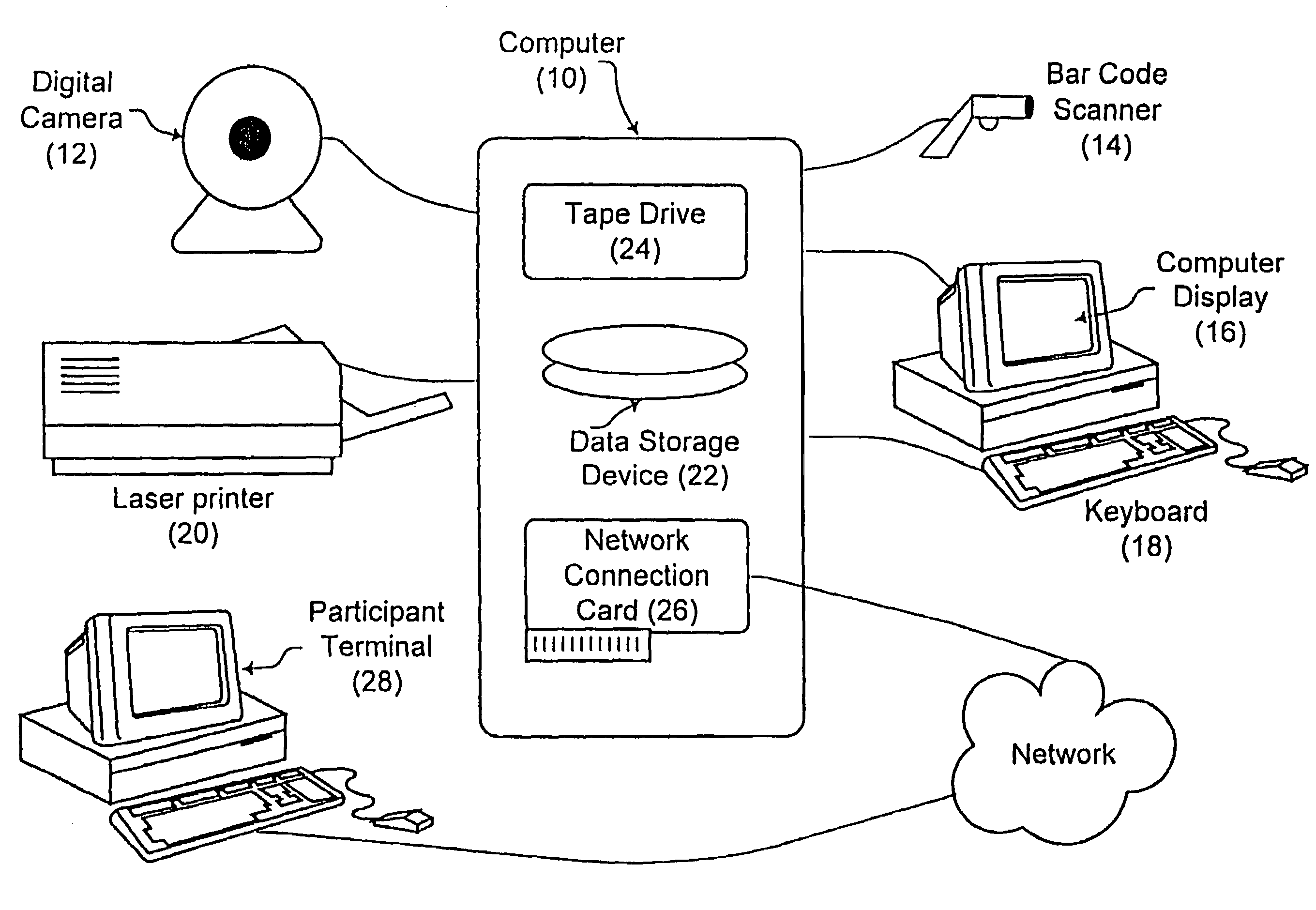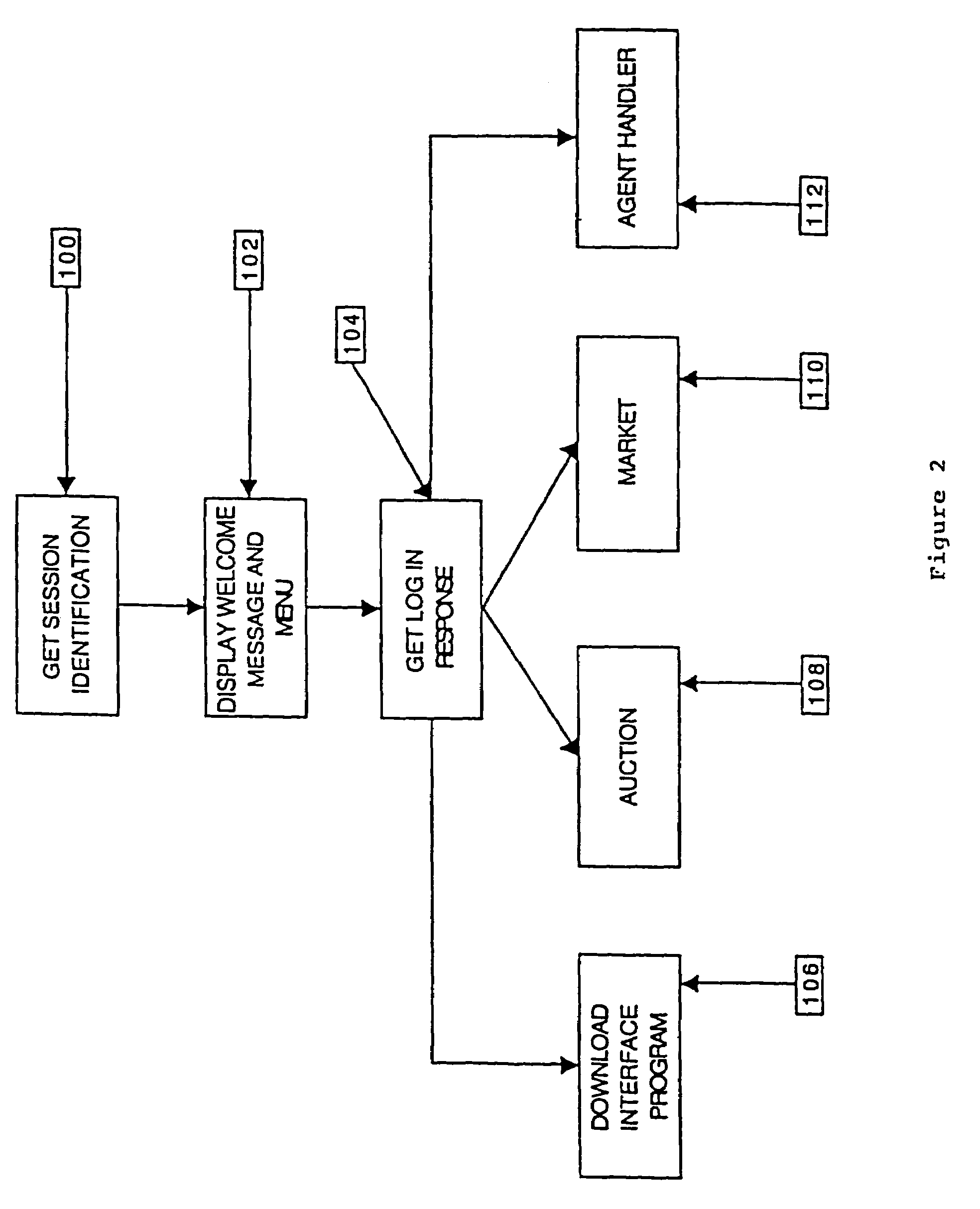Method for facilitating commerce at an internet-based auction
a technology of internet-based auctions and auctions, applied in finance, data processing applications, buying/selling/leasing transactions, etc., can solve the problems of not providing an avenue, prior art does not provide a means to electronically market used goods, and art does not show a way for small to medium-sized businesses, etc., to achieve low cost
- Summary
- Abstract
- Description
- Claims
- Application Information
AI Technical Summary
Benefits of technology
Problems solved by technology
Method used
Image
Examples
Embodiment Construction
[0049]It is understood that the get session identification procedure 100 is a routine that monitors the communication ports and virtual communication ports residing on a protocol stack. The consignment node may use, for example, a X.25 interface card, available from Eicon Corporation or Frontier Corporation to execute an X.25 protocol stack in a PC workstation. The get session identification 100 program may monitor the X.25 protocol for incoming calls. If the program identifies an incoming call it may answer the call by transmitting the appropriate X.25 packet to the network on the appropriate virtual channel. It is understood that other protocols, such as TCP / IP, DECNET, SNA and ATM are within the scope of the present invention and that multiple protocol stacks may simultaneously execute in a consignment node. Therefore, the get session identification program 100 may have multiple instances to connect and monitor the various protocols. After the get session identification 100 has a...
PUM
 Login to View More
Login to View More Abstract
Description
Claims
Application Information
 Login to View More
Login to View More - R&D
- Intellectual Property
- Life Sciences
- Materials
- Tech Scout
- Unparalleled Data Quality
- Higher Quality Content
- 60% Fewer Hallucinations
Browse by: Latest US Patents, China's latest patents, Technical Efficacy Thesaurus, Application Domain, Technology Topic, Popular Technical Reports.
© 2025 PatSnap. All rights reserved.Legal|Privacy policy|Modern Slavery Act Transparency Statement|Sitemap|About US| Contact US: help@patsnap.com



